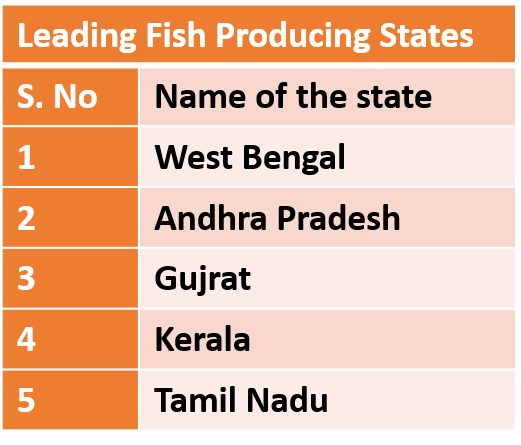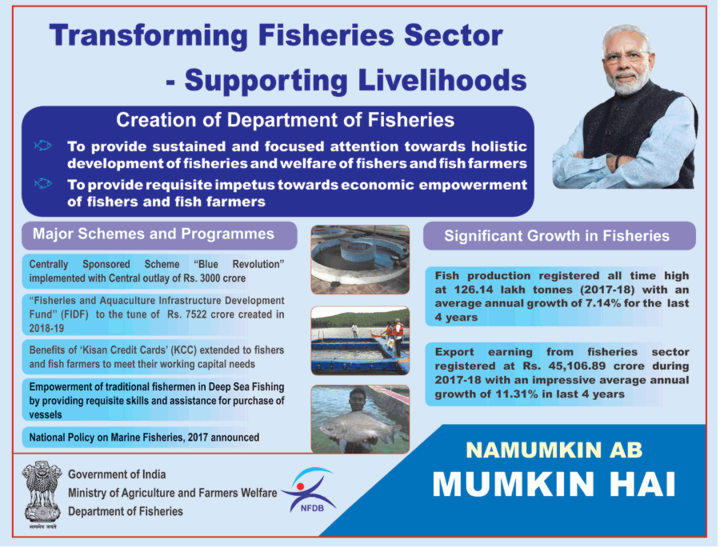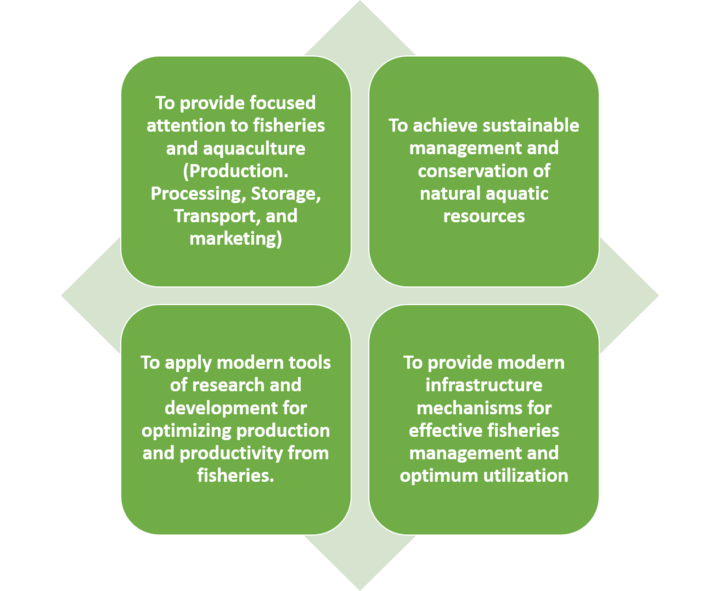- Home/
- Regulatory Bodies/
- NABARD Grade A/
- Article
Fishery Sector: Must Know Concept for NABARD & Other Bank Regulatory Exams
By BYJU'S Exam Prep
Updated on: September 11th, 2023

The fishery is an integral part of the Agriculture & Rural Development section of the NABARD Grade A exam 2022. NABARD Grade A syllabus is very vast. You should start covering chapters one by one.
In this article, we have brought an important chapter of the NABAD Grade A exam ARD syllabus which is Fishery. Kindly go through the article completely and start practicing questions from our app.
Table of content
Fishery sector in India
Let’s go through the overview of the Fishery sector of India including the importance and contribution of the sector to India’s growth, challenges faced by the sector, and initiatives taken by Govt. for the improvement of this sector.
Overview of the sector:
- Our fishery sector constitutes about 6.3% of the global fish production.
- The sector contributes 1.1% of the GDP and 5.15% of the agricultural GDP.
- There are two branches of the fishery sector namely Inland Fisheries and Marine Fisheries.
- The total fish production has nearly 65% contribution from the inland sector and the rest from marine fishing.
- Fish and fish products account for around 10% of the total exports of the country and nearly 20% of the agricultural exports.
- The Indian fisheries sector is of a small-scale nature.
- Besides being a source of protein-rich nutritious food, income, and livelihood to poor fishers, the fisheries sector is important for engaging the rural population in a number of ancillary activities- i.e. marketing, retailing, transportation, etc.
Importance Of The Fishery Department
- To boost the quality of fish in the state and produce high-quality fish seeds while making the best use of available resources.
- Implementation of Indian and Assamese government programs linked to fishing.
in order to spread the benefits to the users at the ground level, it is important to identify and promote research and studies on fisheries and areas relevant to fisheries. - To gather, consolidate, evaluate, and make accessible sufficient and pertinent statistics and other information for proper planning to advance fish farming and related businesses/activities.
- To draft/assist in writing/verifying project reports and proposals pertaining to fishing and industries that are related to fishing.
Current Status of the Indian Fishing Industry
- For many villages, the principal source of income comes from fishing.
- India produces more fish than any other country in the world, and its exports total more than Rs 47,000 crore.
- With a growth rate of 6 to 10% over the previous five years, fishing is the nation’s top agricultural export by far.
- The fact that the farm sector’s growth rate during the same time period was roughly 2.5% highlights its importance.
- There are 3.5 million maritime fishermen in the country, and 10.5 million people work in inland fisheries and fish farming.

Challenges of the Fishery Sector
- The sector suffers from low-scale, stagnating yields of inland and freshwater aquaculture, and poor infrastructure such as cold storage facilities, leading to an estimated 15-20 percent post-harvest loss.
- The access to quality seed and feed for fish farming and the inadequate availability of credit make the poor fisher communities not invest in fish farming.
- For inland harvesting of fish, there is no code of conduct for the leasing of water bodies and no separate provision of drought affecting this sector.
- With the loss of habitat and indiscriminate fishing, marine fishing has declined due to depleting resources, energy crisis, and resultant high cost of fishing.
- Enhanced human activity in aquatic areas creates the frequent occurrence of dead zone/ Hypoxic zones leading to shifting or permanent loss of fishing zone.
- With the increased usage of Fibre Reinforced Plastic (FRP), and poor-quality boats have amplified leading to ill effects on marine culture.
Government Step taken
- For Inland Fishing
- The government has launched a Centrally Sponsored Scheme for “Development of Inland Fisheries and Aquaculture” in various states. It includes the Productive Utilization of Inland Saline/Alkaline Soils for Aquaculture, Integrated Development of Inland Capture Resources, etc.
- For marine fishing
- The government had notified National Policy on Marine Fishing 2017.
- Prohibited the use of LED lights and other artificial lights and practice of bull-trawling, purse seining, and gill netting operations in the Indian EEZ to protect the marine ecology.
- The government has prepared a Census of fishermen, designed a database of fishing activities, installing tracking devices in fishing boats operating in the waters to averse the accident on boast/vessels.
- An umbrella scheme ‘Blue Revolution: Integrated Development and Management of fishermen has been formulated by merging all the schemes covering all the activities carried out by the National Fisheries Development Board.
Blue Revolution: Integrated Development & Management of Fisheries
- The project has been reformed by the Department of Animal Husbandry, Dairy, and Fisheries, which has unified all active schemes under the banner of the Blue Revolution.
- The States/UTs receive financial support from Blue Revolution’s Centrally Sponsored Scheme (CSS) to help the fishermen.
- The reorganized program covers all of the National Fisheries Development Board’s functions, including deep sea fishing, mariculture, and inland and marine fisheries (NFDB).
Pradhan Mantri Matsya Sampada Yojana (PMMSY)
- For the advancement of inland and marine fisheries, the government has introduced the PMMSY.
- Fishing harbors, cold chains, markets, and other infrastructure projects will each receive Rs. 9000 crore and Rs. 11,000 crores, respectively, for funding.
- There are provisions for supporting fishermen during the ban time (during the period fishing is not permitted). Islands, Himalayan States, and Northeast & Aspirational Districts will be the main areas of emphasis.
- In order to assist fishermen and fish farmers in meeting their working capital needs, the government has now made Kissan Credit Cards (KCC) facilities available to them.

National Fisheries Development Board:
- The National Fisheries Development Board (NFDB) was established in 2006 as an autonomous organization under the administrative control of the Department of Animal Husbandry, Dairying & Fisheries, Ministry of Agriculture and Farmers Welfare, Government of India to enhance fish production and productivity in the country and to coordinate fishery development in an integrated and holistic manner.
Objectives of NFDB:

If you are aiming to clear the NABARD Grade A exam in 2022, then join the Online Classroom Program where you will get:

